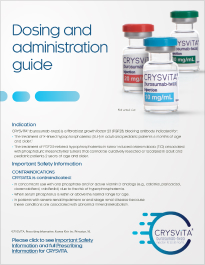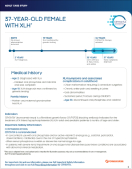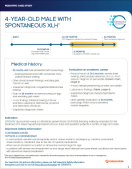Resources for your practice

CRYSVITA resources
Explore these CRYSVITA resources designed to help HCPs navigate treatment for pediatric and adult patients with X-linked hypophosphatemia (XLH).

CRYSVITA dosing and administration guide
A guide that details dosing and administration information for CRYSVITA in adult and pediatric patients with XLH.

Adult case study
37-year-old female with XLH on CRYSVITA
A patient case study adapted from real-life examples that provides medical history, diagnosis, and treatment information for an adult patient with inherited XLH.

Pediatric case study
4-year-old male with spontaneous XLH on CRYSVITA
A patient case study adapted from real-life examples that provides medical history, diagnosis, and treatment information for a pediatric patient with spontaneous XLH.

Ready to start your patients on CRYSVITA?
Take the first step by filling out the enrollment form.


Stay connected
Set up time with a representative to talk more about CRYSVITA,
or sign up for more information on CRYSVITA for the treatment of XLH.
